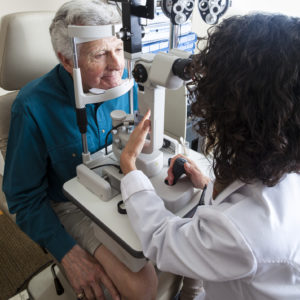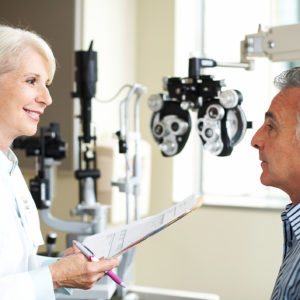Vision Care for Our Veterans
 You’ve probably heard about the hospitals and clinics run by the Department of Veterans’ Affairs (VA) during your optometry school career. Eye clinics at the VA serve veteran military service members in a variety of ways. Beyond routine eye examinations, the VA optometrists diagnose and manage diseases and do pre- and post-surgical management. But why does optometry have such a strong relationship with the VA?
You’ve probably heard about the hospitals and clinics run by the Department of Veterans’ Affairs (VA) during your optometry school career. Eye clinics at the VA serve veteran military service members in a variety of ways. Beyond routine eye examinations, the VA optometrists diagnose and manage diseases and do pre- and post-surgical management. But why does optometry have such a strong relationship with the VA?
Optometry Services at the VA
During the 1970s, optometric scope of practice began expanding. Because of this the Veterans’ Health Administration began to realize the full potential of hiring optometrists to provide outpatient services within their departments of ophthalmology. Officially recognized on October 21, 1976, the Veterans Health Administration Optometry Service created the framework for optometrists to integrate into the healthcare system. Working as a team, both optometrists and ophthalmologists are more cost-effective, better-trained, and efficient in their treatment of ocular pathology and routine care. The partnership between optometrists and ophthalmologists has lead to standardized treatments for diabetic retinopathy through the VA Teleretinal Imaging Screening Program through the VA/DoD Diabetes Mellitus Clinical Practice Guidelines.
Providing the Best Care For Our Veterans
Are optometrists the sole practitioners who received benefit from the VA’s streamlined system? The short answer is no. Many other healthcare providers were assessed to address shortcomings and inefficiencies within the healthcare system. These providers included podiatrists, pharmacists, and audiologists.
Hospital Privileges
In order to provide better care to military veterans, the VA granted hospital privileges to other branches of healthcare. This provided a holistic approach to patient care. In the world of optometry, the system endowed optometrists access to order medical testing, perform procedures, and triage patients. Therefore, ophthalmologists could expedite wait times for glaucoma, cataract, retinal, corneal, and oculoplastic surgeries.
Where do we go from here?
The changes in the VA optometry system are reflected in the opportunities for eye care providers. Many optometry offices within the VA are now more aptly named “Vision Department” or “Eye Clinic.” This honors the collaboration and co-management between the surgical and primary eye care fields. Each year, many fourth-year optometry students take advantage of the rotations available within the VA system across the country. Moreover, residencies continue to flourish within the Veterans Administration for newly-graduated optometrists in the areas of gerontology, low vision, ocular pathology, & primary care.
Looking towards the future

The Veterans Administration recognized the value in empowering optometrists to aid in service member care. The future of eye care is bright as other hospitals and academic institutions acknowledge and adopt the VA’s system and practices. By allowing optometrists to work within a hospital setting, patient care is streamlined and cooperative relationships are fostered within the medical community. Thanks to the VA, there are now over forty years of evidence to prove it.
